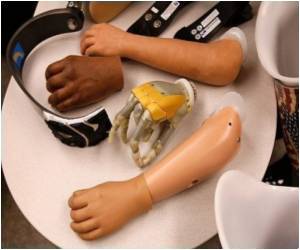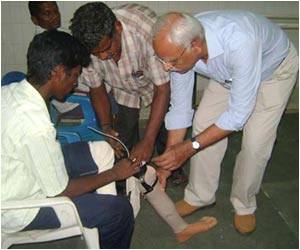Functional testing showed that electrical stimulation of muscle fibers caused limbs to contract with 80% strength of what would be seen in newborn animals.

Functional testing of the isolated limbs showed that electrical stimulation of muscle fibers caused them to contract with a strength 80% of what would be seen in newborn animals. The vascular systems of bio-engineered forelimbs transplanted into recipient animals quickly filled with blood which continued to circulate, and electrical stimulation of muscles within transplanted grafts flexed the wrists and digital joints of the animals’ paws. The researchers also successfully de-cellularized baboon forearms to confirm the feasibility of using this approach on the scale that would be required for human patients.
The study is published online in Biomaterials.
Source-ANI










